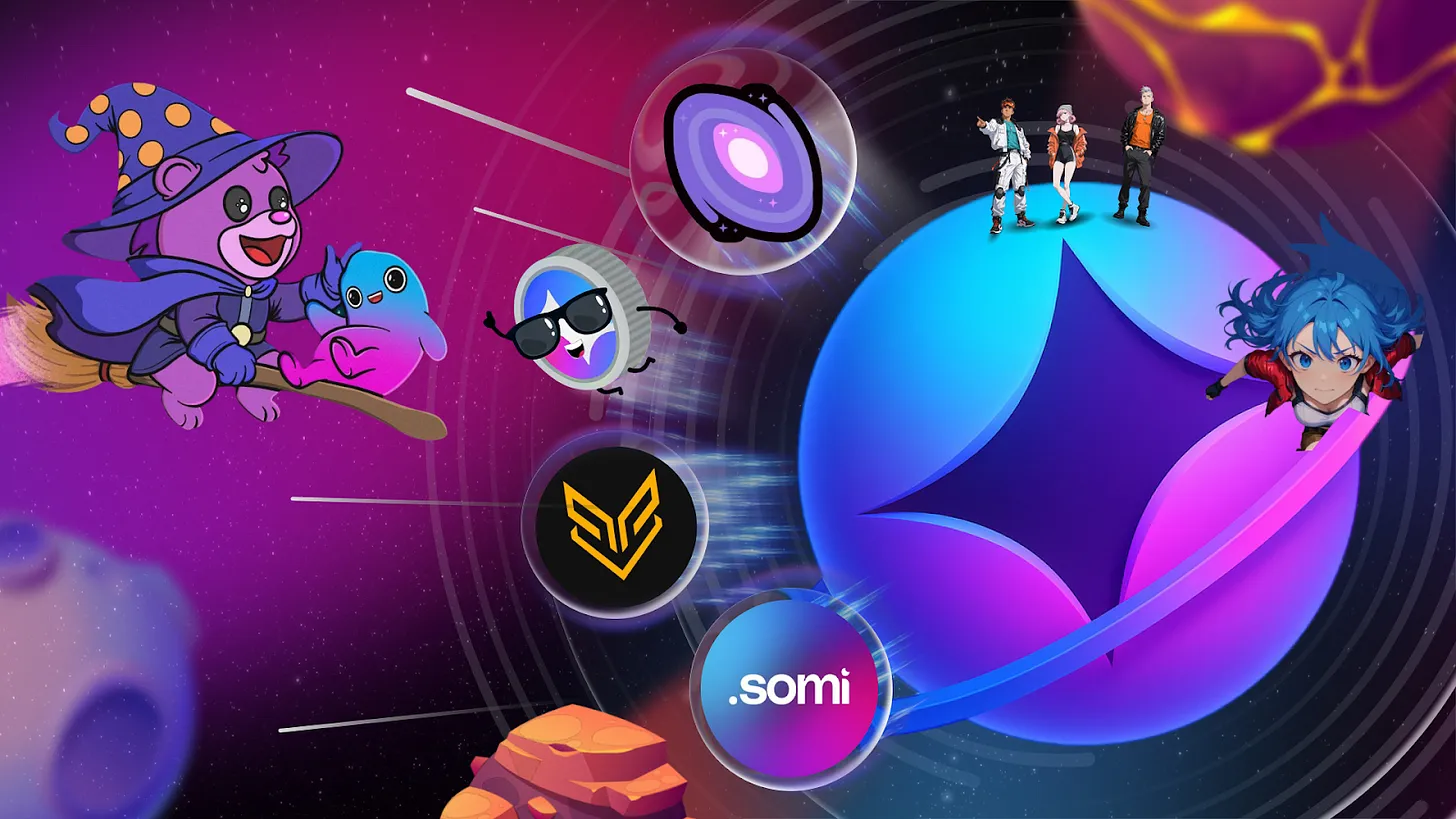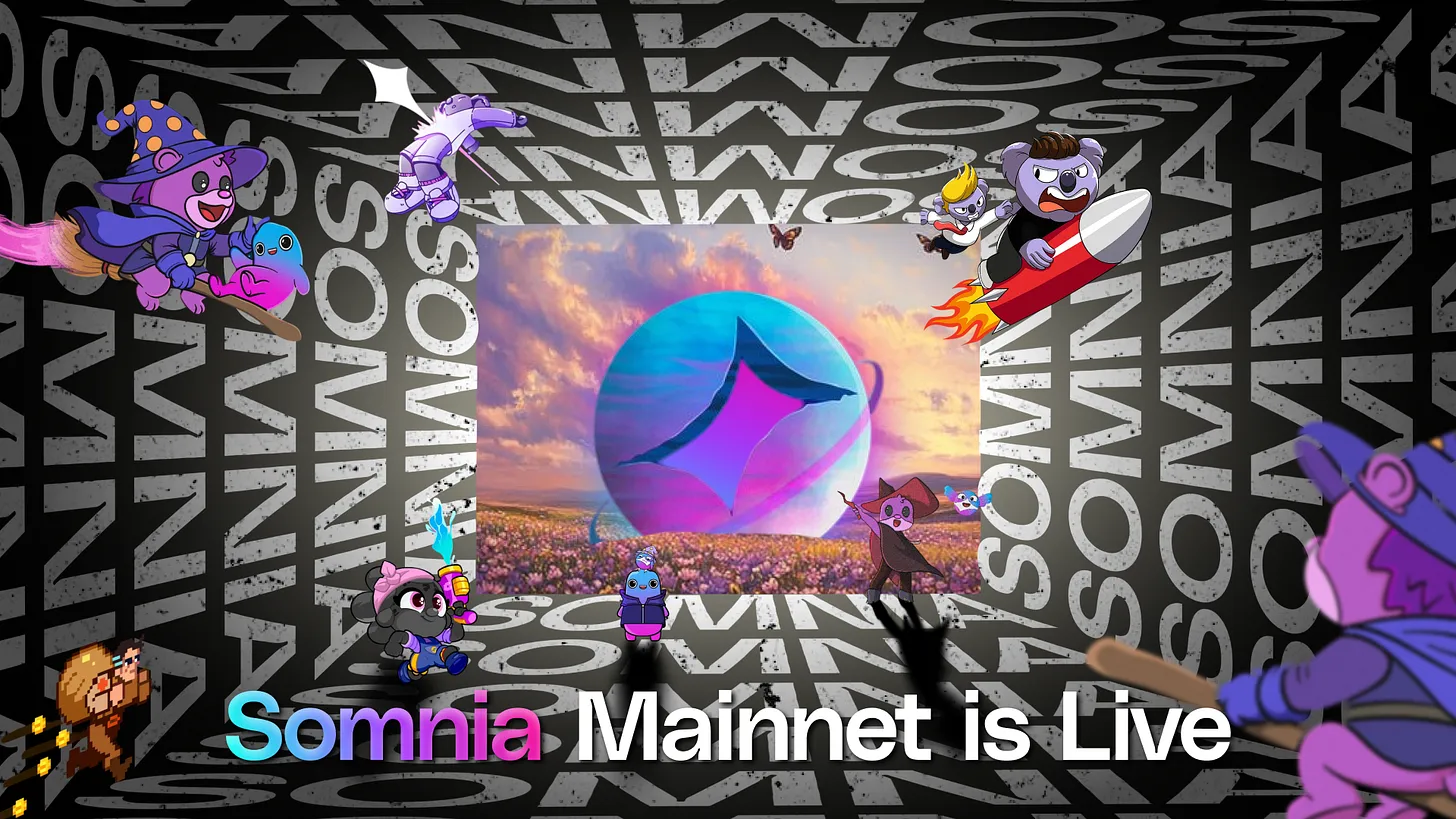
Somnia Web3 Games Insight: The Top 3 Web3 Titles That Redefined Player Experience

The Web3 gaming space is full of experiments, but only a few titles have managed to combine blockchain innovation with genuinely enjoyable gameplay. While many games focus on tokenomics or flashy NFT integrations, the ones that truly stand out are those that prioritize player experience—whether through seamless blockchain features, strong game mechanics, or entirely new business models. Here are three Web3 games that got it right, plus an honorable mention for a pioneer that changed everything.
- Off the Grid
AAA Quality Gameplay with Web3 Optionality
Off the Grid (OTG) is a masterclass in blending AAA-quality gaming with subtle Web3 elements. Developed by Gunzilla Games and envisioned by Neill Blomkamp (District 9), OTG is a cyberpunk battle royale that doesn’t shove blockchain features in your face—and that’s a good thing.
Why It Works:
- Gameplay First: The core battle royale mechanics are polished, engaging, and immersive, drawing in traditional gamers.
- Web3 Optional: For those who want it, the game offers true ownership of in-game items like cybernetic limbs and weapons through NFTs on the Avalanche subnet. But if you’re not into blockchain, you can still enjoy the full game.
- Strategic Go-to-Market: OTG’s marketing strategy targets both Web2 and Web3 audiences, bridging the gap between hardcore gamers and crypto enthusiasts.
Off the Grid proves that Web3 integration doesn’t have to come at the expense of gameplay. By making blockchain features optional, it appeals to a wider audience without alienating traditional players.
- Pirate Nation
A Fully On-Chain Game That’s Actually Fun
Pirate Nation is a breath of fresh sea air in the Web3 space. Developed by Proof of Play, this pirate-themed RPG delivers a genuinely fun, fully on-chain gaming experience.
Why It Works:
- Engaging Gameplay: With procedurally generated quests, ship-building, and a card-based combat system, Pirate Nation offers depth and replayability.
- Appeals to Both Worlds: It’s accessible enough for casual Web2 gamers while offering on-chain transparency and ownership that Web3 natives crave.
- Player-Driven Economy: The game’s economy is fully on-chain, allowing players to own and trade resources, NFTs, and tokens like $PIRATE.
Pirate Nation shows that fully on-chain games don’t have to be clunky or overly complex. It’s a model for how to make Web3 gaming both fun and functional.
- Parallel
The Perfect Web2 to Web3 Bridge for CCG Fans
Parallel is a digital trading card game (CCG) that’s as much about strategic gameplay as it is about innovative blockchain integration. Set in a rich sci-fi universe, it combines the best of both worlds.
Why It Works:
- Flawless Execution: The game’s mechanics are tight, the artwork is stunning, and the lore is compelling.
- Web3 Integration: Players own their cards as NFTs, enabling true ownership and secondary market trading.
- Bridging the Gap: Parallel appeals to CCG fans from Web2 while offering the benefits of Web3, such as decentralized marketplaces and provable scarcity.
Parallel demonstrates how Web3 can enhance genres that already have strong communities, like trading card games. It’s a blueprint for how to merge traditional and blockchain gaming seamlessly.
Honorable Mention: Axie Infinity
Pioneering Play-to-Earn, But Missing the Mark
No list of influential Web3 games would be complete without mentioning Axie Infinity. It pioneered the play-to-earn (P2E) model and brought blockchain gaming into the mainstream.
Why It’s Important:
- Business Model Innovation: Axie introduced P2E mechanics that allowed players to earn real income, sparking a global phenomenon.
- A Near Miss: While the gameplay didn’t fully resonate with a mainstream audience, and the economy faced sustainability issues, the innovation in its business model laid the groundwork for future games.
- Potential for Evolution: With more complete design and better economic balancing, P2E models like Axie’s could become a cornerstone of future Web3 games, especially when combined with SocialFi elements.
Axie Infinity showed the world what was possible, even if it didn’t stick the landing. It’s a reminder that innovating on either gameplay or business model—or ideally both—is key to creating games with lasting appeal.
Why Somnia Is the Perfect Blockchain for Web3 Gaming
While these games have pushed the boundaries of what Web3 gaming can achieve, many still face limitations from the blockchains they operate on—whether it’s scalability, speed, or cost. That’s where Somnia comes in.
Somnia’s high-performance blockchain infrastructure is built to support real-time, fully on-chain gaming at scale. With over 460,000 TPS, sub-second finality, and sub-cent fees, developers can build games that are more reactive, immersive, and accessible to mass audiences. Whether you’re looking to create a fully on-chain RPG like Pirate Nation, integrate NFT-driven economies like Parallel, or experiment with new business models inspired by Axie Infinity, Somnia provides the speed, efficiency, and flexibility to make it happen.
Stay updated with Somnia
Twitter – Discord – Telegram – Reddit – Lightpaper



